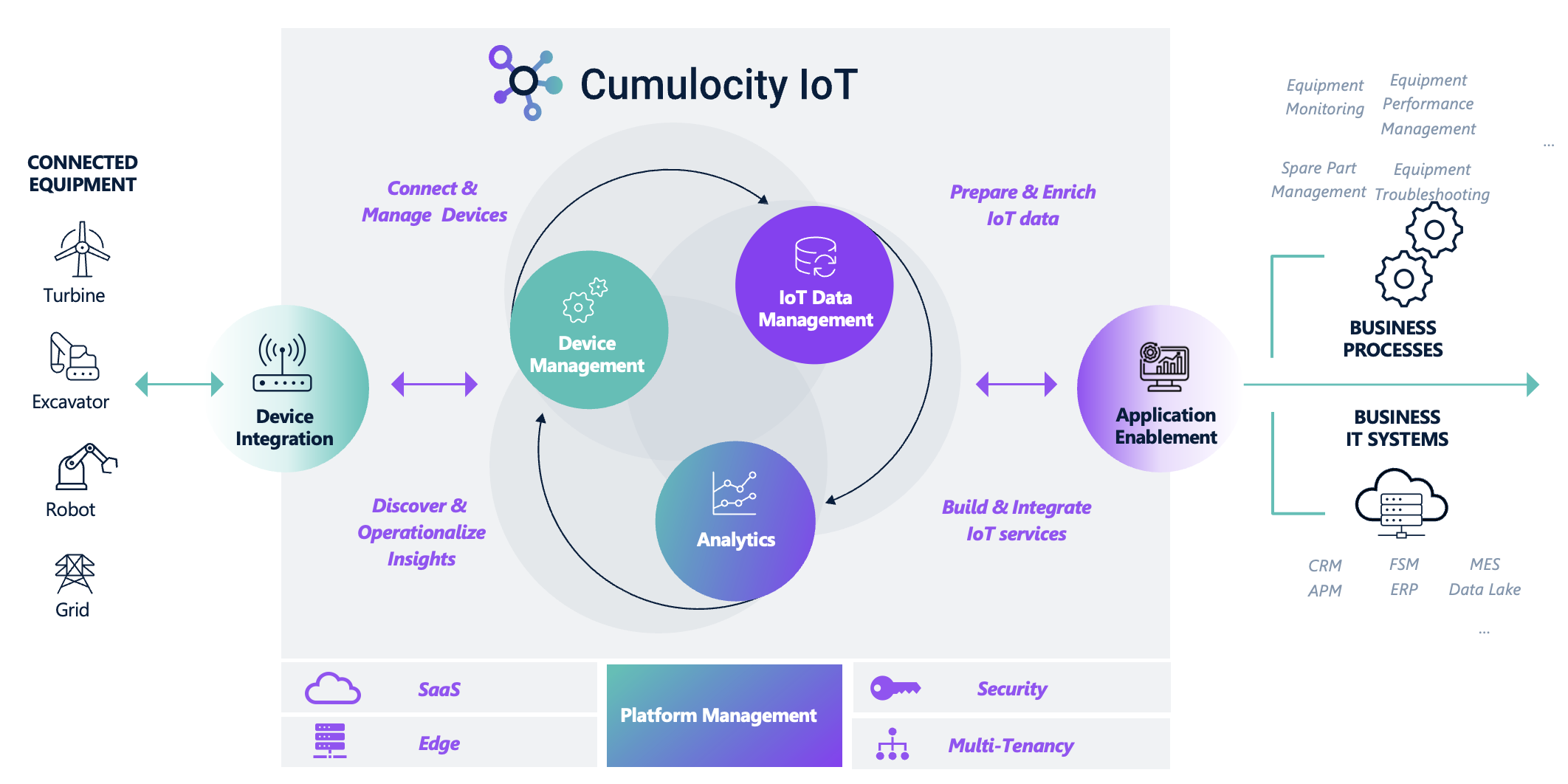Introduction to the Cumulocity platform
Cumulocity is a robust, secure and scalable Internet of Things (IoT) platform designed to empower businesses in the following aspects:
-
Device integration: Connect any type of device, from simple sensors to complex machinery, ensuring reliable and secure data transmission.
-
Device management: Monitor, control, and manage all remotely connected equipment throughout its entire lifecycle, from deployment to retirement.
-
IoT data management: Prepare, normalize, and enrich real-time and historical data, creating a unified view of your equipment.
-
Application enablement: Visualize and analyze IoT data, integrate it with existing business systems, and rapidly build custom IoT applications and solutions to meet your business needs.
-
Analytics: Automate, optimize, and remotely control equipment operations using intelligent analytics and real-time decision-making.
-
Platform management: Manage configurations, security settings, and tenant structures in the cloud, or deploy the platform on your premises for full control.

This section introduces the core concepts and capabilities of Cumulocity, catering to IoT architects, automation engineers, industrial engineers, and developers.
